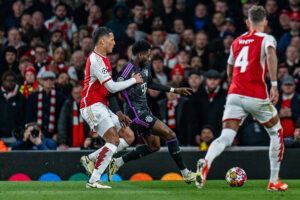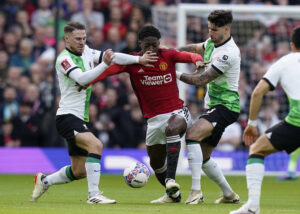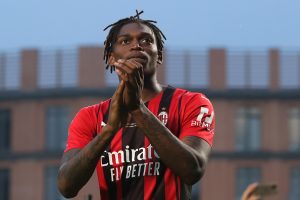The most important transfer of the summer, and certainly the most cost-effective, has probably already happened. It did not, however, involve any of the eye-watering fees seen for some of the new arrivals to the Premier League. Instead it is the transfer of one of the best central defenders in the world, Leonardo Bonucci, from Juventus to Milan for a relatively meagre £35 million.
The Milan Revival
The move was surprising for several reasons. First, it was astounding that Bonucci left Juventus at all, given that he was part of the superb back line which has been the bedrock of the club’s record-breaking six successive Serie A titles. Rumours later transpired, however, of in-fighting within the team.
Secondly, Bonucci had been sought after by almost every major club and especially by the Premier League giants for the past year. Ultimately, though, family reasons dictated that he remained in Italy, as his young son, Matteo, has been seriously ill and requires ongoing hospital treatment.
Thirdly and most importantly, it is remarkable that Juventus let Bonucci move to Milan, one of their greatest domestic rivals. The transfer of players between the top clubs in Italy has traditionally been far more common than between the top clubs in other countries, so the club’s hierarchy may have decided that the combination of Bonucci’s long service to the club and his need to stay in Italy merited the unusual transfer of a key player to a major rival.
Milan’s new owner, the mysterious Chinese investor Li Yonghong, finally appears to have proved his credentials. There have been numerous attempts by Italian and foreign investors to buy Milan in recent years, after it became clear that its long-standing owner, Silvio Berlusconi, was finally prepared to sell the club that had made his name and set him on the path to ruling Italy. All had failed and it appeared that Milan were destined to languish in the doldrums for at least another season. Now, Li Yonghong has not only acquired the club but provided tangible proof that he can restore it to its glory days, which are among the most glorious that any club in European football has ever enjoyed.
The Glory Days
First, there was the great “Grenoli” side of the 1950s, named after the three Swedish stars—Gunnar Gren, Gunnar Nordahl and Nils Liedholm—which, in its combination of foreign glamour and Italian obduracy, provided the template for nearly every great Italian club side that has emerged since.
Then there was the Gianni Rivera-starring side of the 1960s that twice won the European Cup in the 1960s, first in 1963 at Wembley and then again six years later at the Bernabeu in Madrid. Those two world-famous stadia were fitting settings for such an exceptional team, which was the first Italian side to conquer Europe and then repeated the feat after its city rival, Inter, had won a couple of European titles itself.
Even those great sides merely provided a prologue to the greatest ever Milan side; the great Dutch-Italian combination of the late 1980s and early 1990s. The astonishing artistry and sheer scoring power of Ruud Gullit, Marco Van Basten and Frank Rijkaard were allied to the defensive excellence and organisational brilliance of the Italian players who so nearly won the World Cup in both 1990 and 1994, including Franco Baresi, Paolo Maldini and Carlo Ancelotti.
That Milan side won back-to-back European Cups in 1989 and 1990, and was so powerful that even after its Dutch stars had departed, the forward momentum they had generated was enough to take them to another European Cup win in 1994, when they thrashed Johan Cruyff’s great Barcelona side 4-0.
The last great Milan side emerged more than a decade ago, when Italian old-timers like Maldini were again combined with foreign stars such as Clarence Seedorf and Andriy Shevchenko to secure European Cup wins in 2003 and 2007. The 2003 triumph was particularly celebrated as it was achieved at the expense of Juventus, Milan winning on penalties after a scoreless stalemate at Old Trafford.
Resuming Hostilities
Juventus’ record in Europe’s top club competition is one of failure. They have lost an astonishing seven European Cup or Champions League finals, making them in one sense the “losingest” major club in European football history. Their two victories were not in the most glorious of circumstances, either; the first overshadowed by the Heysel disaster in 1985 and the second coming against a relatively youthful Ajax side.
Milan’s European record provides a complete contrast. Not only have they won seven European Cups, which puts them second on the all-time list behind only Real Madrid, but they have often done so in style. That was especially true in 1989, when they destroyed Romania’s Steaua Bucharest 4-0, with both their star Dutchmen, Van Basten and Gullit, scoring twice.
Juventus are domestic giants but European minnows, whereas Milan have cast a giant shadow over both their own country and the entire continent. The fear among some Juve fans now is that the completely unforeseen transfer of their star centre-back to the Rossoneri might provide the foundation for another great Milan side to emerge, one that could ultimately claim Italy’s next European Cup win before their own supposedly all-conquering side does. If that does happen, then this transfer will not only go down as the most important of 2017 but one of the most important in the history of football.
Main Photo






